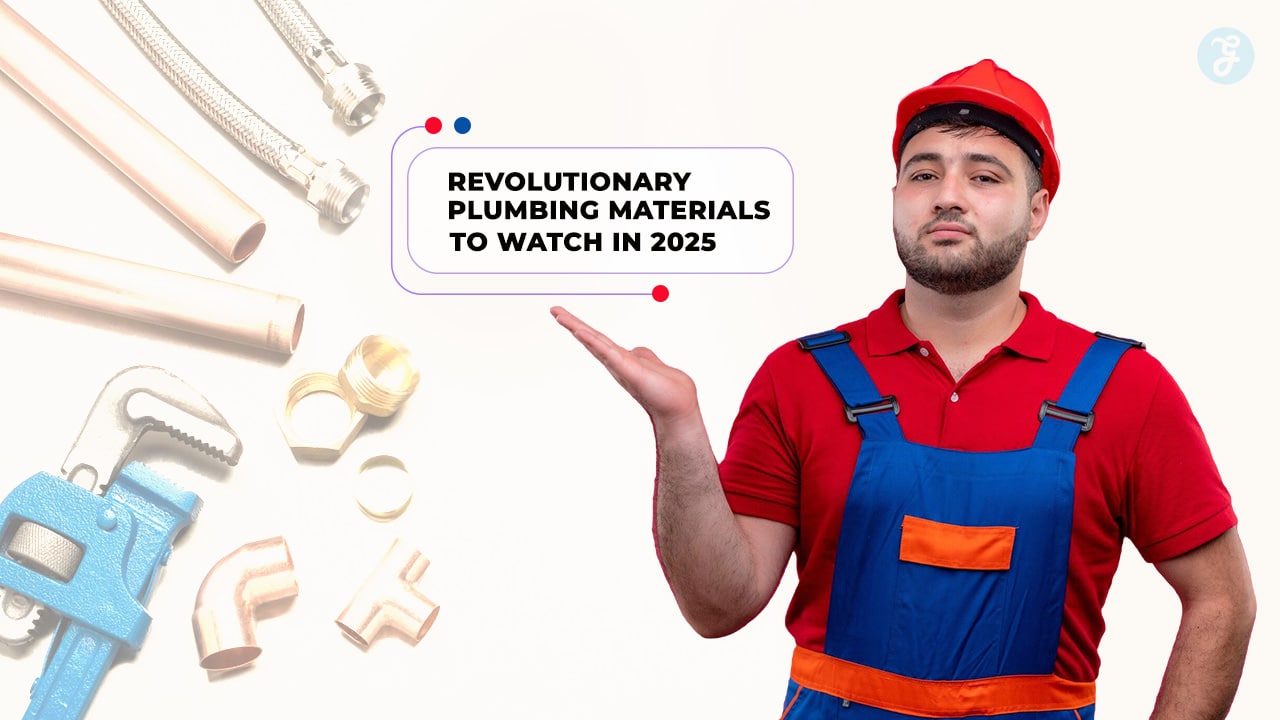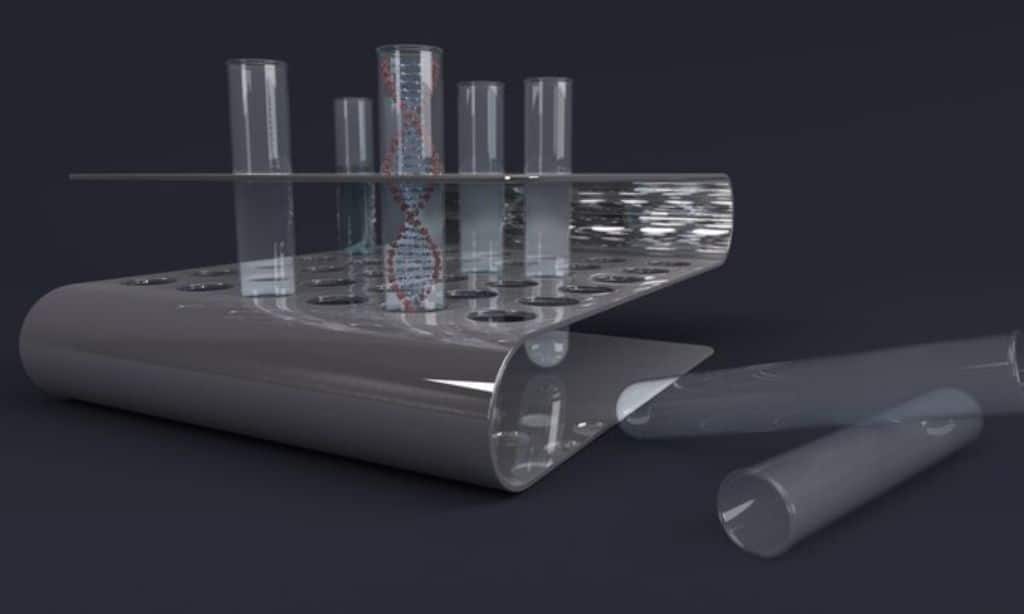The plumbing industry is undergoing a significant transformation as new technologies and innovative materials emerge to address growing demands for sustainability, durability, and cost-effectiveness. As we move into 2025, it’s crucial to stay informed about the revolutionary plumbing materials to watch.
These materials are designed to outperform traditional options by offering enhanced features such as corrosion resistance, flexibility, and smarter functionalities. Whether you’re a contractor, homeowner, or industry professional, understanding these advancements will not only give you a competitive edge but also help you implement more efficient and eco-friendly plumbing systems.
In this article, we’ll dive deep into the revolutionary plumbing materials to watch in 2025. We’ll discuss how these materials are reshaping the plumbing industry and explore their key benefits, practical applications, and potential for transforming both residential and commercial plumbing projects.
What Are Revolutionary Plumbing Materials?
Revolutionary plumbing materials to watch are those that introduce advanced characteristics and capabilities compared to traditional plumbing materials. These innovations are specifically designed to meet the evolving needs of plumbing systems in modern buildings, focusing on sustainability, energy efficiency, and durability.
Materials like PEX, HDPE, and graphene-enhanced pipes are revolutionizing the industry, offering superior performance, lower maintenance costs, and reduced environmental impact.
The emergence of these materials signifies a shift towards smarter, more efficient plumbing systems that not only improve performance but also align with green building practices and eco-conscious construction projects.
As a result, these materials will play a vital role in shaping the future of plumbing systems in both residential and commercial settings.
Top 10 Revolutionary Plumbing Materials to Watch in 2025
Here are the 10 revolutionary plumbing materials you need.
1. Cross-Linked Polyethylene (PEX) Piping
Cross-linked polyethylene (PEX) is one of the most popular and revolutionary plumbing materials to watch due to its flexibility, resistance to corrosion, and ease of installation. PEX is especially popular in residential plumbing, offering a cost-effective alternative to copper piping. As more homes adopt radiant heating systems and smart plumbing technologies, PEX is poised to become even more essential in 2025.
Why PEX is Gaining Popularity in 2025:
- Easy Installation: PEX’s flexibility allows for quick and easy installation without the need for complex fittings.
- Durability: Unlike metal pipes, PEX resists corrosion, chlorine damage, and scale buildup, which means it lasts longer with minimal maintenance.
- Cost-Effectiveness: PEX is affordable compared to other materials like copper, offering both material and installation savings.
Benefits of PEX Piping
| Benefit | Details |
| Flexible Installation | Can be bent to fit around obstacles, reducing the need for joints. |
| Corrosion-Resistant | Won’t corrode like metal pipes, reducing long-term repair costs. |
| Cost-Effective | PEX is less expensive than copper and requires less labor. |
2. High-Density Polyethylene (HDPE) Pipes
High-Density Polyethylene (HDPE) pipes are revolutionary plumbing materials to watch due to their ability to resist chemicals, extreme weather conditions, and environmental stress. HDPE pipes are becoming an essential choice for plumbing systems in harsh environments where other materials might fail.
HDPE’s resistance to corrosion, lightweight nature, and recyclability make it a strong contender for the future of plumbing, especially in municipal water systems and industrial applications.
Key Features of HDPE Pipes:
- Chemical Resistance: HDPE can handle a wide range of chemicals without degrading, making it ideal for industrial use.
- Durability: The material is tough, ensuring long-lasting performance in a variety of conditions.
- Sustainability: HDPE is fully recyclable, aligning with global efforts to reduce plastic waste.
Benefits of HDPE Pipes
| Feature | Details |
| Chemical Resistance | Ideal for transporting harsh chemicals and wastewater. |
| Corrosion-Free | Resistant to rust, ensuring the longevity of the system. |
| Lightweight | Easier to install and transport, reducing labor costs. |
3. PVC with Integrated UV Protection
PVC (Polyvinyl Chloride) is a well-known plumbing material, but revolutionary plumbing materials to watch include versions of PVC enhanced with integrated UV protection. These pipes are designed for outdoor and exposed plumbing applications, offering superior resistance to sunlight and preventing degradation that is common in traditional PVC when exposed to UV rays.
With UV protection, these pipes are highly durable, making them an excellent choice for irrigation systems, outdoor plumbing, and areas where UV exposure is inevitable.
How UV Protection Improves PVC Durability:
- Prevents Damage: UV-resistant PVC can withstand harsh sunlight without cracking or weakening.
- Longer Lifespan: These pipes maintain their strength and flexibility longer, reducing the need for frequent replacements.
- Affordable: PVC is still an economical choice for outdoor plumbing systems, with added UV protection extending its value.
Features of UV-Protected PVC
| Feature | Details |
| UV Resistance | Protects pipes from the harmful effects of UV rays. |
| Longer Lifespan | Reduces the risk of cracking and premature aging. |
| Cost-Effective | Offers value for outdoor applications at an affordable price. |
4. Graphene-Enhanced Plumbing Materials
Graphene is a revolutionary material with remarkable strength, conductivity, and flexibility. Integrating graphene into plumbing materials is one of the most exciting revolutionary plumbing materials to watch in 2025. The potential applications for graphene-enhanced pipes and fittings are vast, promising to provide plumbing systems with higher durability, improved performance, and smarter functionalities.
Graphene could lead to the creation of lighter, stronger plumbing systems that are capable of withstanding extreme pressures and temperatures, making them ideal for both residential and commercial plumbing projects.
The Future of Graphene in Plumbing:
- Increased Strength: Graphene’s exceptional strength improves the durability and performance of plumbing materials.
- Efficiency: Its conductivity could lead to the development of smart plumbing systems capable of regulating water temperature and pressure in real-time.
- Lightweight: Graphene-enhanced pipes are lighter, making them easier to install without compromising on strength.
Advantages of Graphene-Enhanced Materials
| Benefit | Details |
| Strength and Durability | Graphene makes plumbing materials stronger and longer-lasting. |
| Energy Efficiency | The material’s properties could help improve water efficiency. |
| Lightweight | Reduced weight makes installation easier and faster. |
5. Copper-Alloy Pipes with Anti-Microbial Properties
Copper has been a go-to material for plumbing for centuries due to its natural resistance to corrosion. The latest revolutionary plumbing materials to watch include copper alloys with built-in anti-microbial properties. These materials are designed to prevent the growth of harmful bacteria, ensuring cleaner and safer drinking water, especially in healthcare settings.
Copper alloys with anti-microbial properties are becoming increasingly popular in hospitals, schools, and food processing industries where sanitation is critical.
Copper’s Anti-Microbial Benefits in Plumbing:
- Bacteria Resistance: Copper alloys inhibit the growth of harmful bacteria such as E. coli and Legionella, helping to maintain a cleaner water supply.
- Corrosion Resistance: Copper alloys are naturally resistant to corrosion, ensuring long-lasting durability.
- Health Benefits: Ideal for medical facilities and environments where hygiene is crucial.
Benefits of Copper-Alloy Pipes
| Benefit | Details |
| Anti-Microbial | Reduces bacterial growth, ensuring cleaner water. |
| Durability | Resistant to corrosion, reducing maintenance. |
| Health-Sensitive | Ideal for healthcare and food processing environments. |
6. Flexible Stainless Steel Hoses
Stainless steel hoses have long been valued for their strength and durability. Revolutionary plumbing materials to watch include flexible stainless steel hoses that provide the same strength while offering the flexibility required for complex installations. These hoses are becoming increasingly popular for both residential and commercial plumbing systems.
Flexible stainless steel hoses are resistant to high pressures, temperature variations, and corrosion, making them ideal for applications such as gas lines, heating systems, and water supply systems.
Flexibility Meets Durability in Stainless Steel Hoses:
- Corrosion Resistance: Stainless steel hoses are immune to rust, extending the lifespan of plumbing systems.
- Ease of Installation: These hoses can be easily bent to fit around obstacles, reducing installation time and labor costs.
- Temperature Resistance: Stainless steel hoses can withstand both high and low temperatures, ensuring reliable performance.
Benefits of Stainless Steel Hoses
| Benefit | Details |
| Corrosion Resistance | Highly resistant to rust and other corrosive agents. |
| Flexibility | Ideal for tight spaces and complex installations. |
| Temperature Resistance | Can handle both hot and cold water systems. |
7. Bio-Based Plastic Plumbing Materials
As sustainability becomes a priority in construction and plumbing, revolutionary plumbing materials to watch now include bio-based plastics. These materials are derived from renewable resources such as corn or sugarcane, offering an eco-friendly alternative to conventional petroleum-based plastics.
Bio-based plastics provide the same benefits as traditional plastic pipes but with a significantly lower environmental impact, making them an excellent choice for green construction projects.
Eco-Friendly Plumbing Solutions for 2025:
- Sustainability: Bio-based plastics reduce reliance on fossil fuels and help lower carbon footprints.
- Biodegradability: These materials decompose naturally, reducing long-term environmental impact.
- Cost-Efficiency: Bio-based plastics are often cheaper to produce than traditional plastics, offering affordable solutions for sustainable plumbing.
Benefits of Bio-Based Plastics
| Feature | Details |
| Renewable Resources | Made from plant-based sources, reducing dependence on petroleum. |
| Biodegradable | Breaks down naturally over time, minimizing environmental waste. |
| Energy-Efficient | Requires less energy to produce compared to traditional plastics. |
Takeaways
The revolutionary plumbing materials to watch in 2025 are changing the way we think about plumbing. From eco-friendly solutions like bio-based plastics to advanced technologies like smart plumbing systems, these materials are set to reshape the industry by offering more durable, efficient, and sustainable alternatives to traditional plumbing systems.
As demand for smarter, greener building practices continues to rise, the adoption of these innovative materials will not only benefit the plumbing industry but will also contribute to a more sustainable and cost-effective future.
Embrace these materials in your next project to stay ahead of the curve and ensure that your plumbing systems are equipped for the challenges of tomorrow.








































